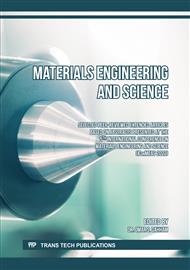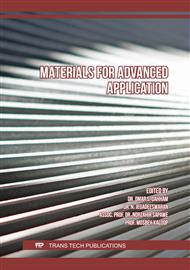p.37
p.47
p.55
p.69
p.79
p.89
p.99
p.107
p.119
Surface Enhancement of Magnesium Implants for Long Term Applications
Abstract:
Mg is a biodegradable metal that possesses excellent biocompatibility, bioactivity, nontoxic degradation products, and unique mechanical properties. These characteristics make it an attractive element to be used as implant material in physiological environments because it biodegrades and has excellent biocompatibility and bioactivity. In addition, an excess of magnesium ions does not result in cellular toxicity in the human body, where it is often getting rid along with urine. The most significant disadvantage of magnesium is its uncontrolled quick corrosion rate, which can cause rapid loss in mechanical qualities. As a consequence, this might cause the implant to fail before the tissue has completely healed.The purpose of this research is to improve the surface features of the implant, as well as to control the rate at which magnesium corrodes and, as a result, the concentration of magnesium ions that are released into the surrounding environment. This will be accomplished by coating the implant surface with a composite biodegradable polymer (Polycaprolactone PCL) matrix reinforced with MgO Nano-particles which will act as a protective layer to increase the corrosion resistance of magnesium implants. In addition, a laser surface modification procedure was implemented in order to improve the surface's qualities and make certain that there is a strong adhesion between the coating and the surface of the substrate. In order to increase the surface roughness of the specimen, (Nd: YAG) laser device was utilized to create pulses on the surface of the specimen.
Info:
Periodical:
Pages:
79-87
Citation:
Online since:
December 2022
Authors:
Price:
Сopyright:
© 2022 Trans Tech Publications Ltd. All Rights Reserved
Share:
Citation:



